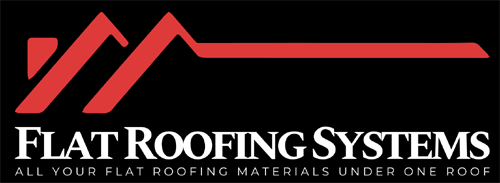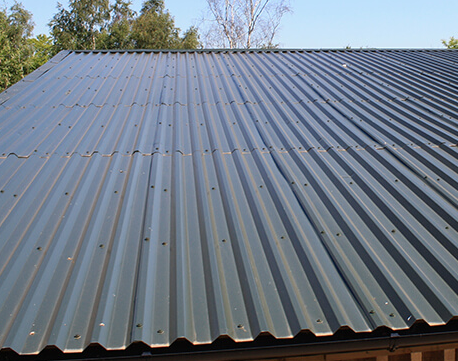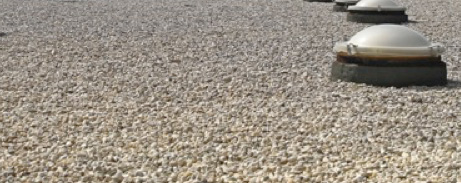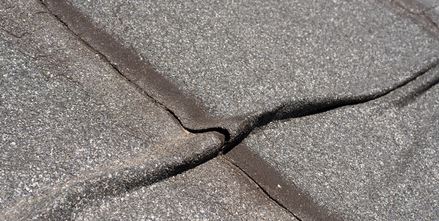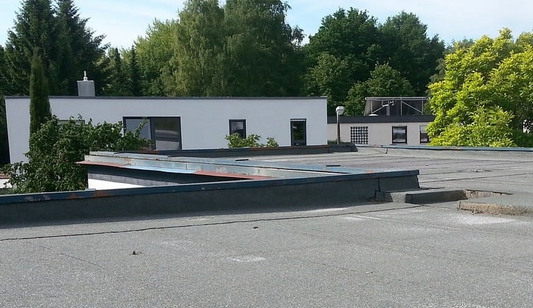Roofing Sheets Explained: Find Your Best Fit
When choosing roofing sheets, several key options stand out in today's market. Metal sheets offer exceptional durability with a 40-year lifespan, while polycarbonate provides superior UV protection and thermal benefits. Fibre cement combines strength with breathability, lasting over 30 years. Bitumen sheets deliver cost-effective water resistance, and plastic options provide lightweight solutions for smaller structures. Each material has specific installation requirements, with metal needing a minimum 10° pitch and professional handling. For residential projects, fiber cement and metal tile form sheets excel, while commercial applications favor traditional metal roofing. Understanding these options will guide you toward the perfect roofing solution for your specific needs.
Key Points
- Profiled metal roofing sheets offers the longest lifespan at 40 years, making it ideal for permanent structures despite higher initial costs.
- Polycarbonate sheets are the best choice for conservatories due to superior UV protection and thermal insulation properties.
- Bitumen sheets provide excellent water resistance and affordability but require professional installation with specialized tools.
- Plastic sheets suit garden structures and outbuildings with their lightweight nature and cost-effective pricing at £12 per meter.
- Fibre cement combines durability and breathability, lasting 30+ years and working especially well for residential buildings.
Types of Roofing Sheets
When it comes to roofing materials, there are five main types of roofing sheets available in today's market: metal, plastic, polycarbonate, bitumen, and fibre cement. Each type offers distinct advantages and specific applications.
Metal sheets provide durability with custom sizing options, though they may require noise reduction solutions and come in corrugated metal sheets or profiled patterns. Plastic sheets offer cost-effective and lightweight alternatives, particularly suitable for small structures. Polycarbonate sheets excel in UV protection and thermal insulation, making them ideal for conservatories. Bitumen sheets deliver excellent water resistance and affordability, perfect for garages and sheds. Fibre cement sheets stand out for their strength and breathability, especially in rural settings.
While metal and plastic options prioritize easy installation, materials like bitumen and fibre cement may require professional expertise for the best outcome.
Material Durability and Longevity
Durability stands as an essential factor when selecting roofing sheets for any construction project. Regular maintenance tips and proper installation significantly influence the longevity of different roofing materials, with each type offering unique impact resistance properties.
| Material Type | Lifespan | Key Durability Features |
|---|---|---|
| Metal | 40 years | High impact resistance, requires protective coating |
| Polycarbonate | 20 years | UV resistant, scratch-prone |
| Fiber Cement | 30+ years | Superior strength, moisture resistant |
Understanding these variations helps in making informed decisions. Metal sheets excel in longevity but require maintenance to prevent rust. Polycarbonate offers excellent UV protection but needs careful handling to avoid scratches. Fibre cement provides outstanding durability against harsh weather conditions, though its weight necessitates robust structural support. Each material's performance depends heavily on proper installation and regular maintenance protocols.
Cost Analysis
The financial investment in roofing materials directly impacts long-term property value and maintenance costs. When conducting a cost efficiency comparison, bitumen roofing sheets emerge as the most economical option, starting as one of the lowest-priced alternatives. Plastic sheets follow at approximately £12 per metre, while metal sheets begin at £14 per metre for polyester and galvanized options.
In terms of environmental impact assessment, fibre cement roof sheets, despite their higher cost, offer superior sustainability and breathability. However, their installation expenses are elevated due to longer fitting times and professional labor requirements.
Polycarbonate sheets present a middle-ground solution, balancing initial costs with durability and thermal efficiency. When factoring in maintenance requirements and longevity, metal roofing often provides the best long-term value despite higher upfront costs.
Installation Basics
Professional installation methods vary greatly across different roofing sheet materials, with each type requiring specific tools and techniques for best outcomes. While metal sheets demand safety gloves and careful handling due to sharp edges, plastic variants offer simpler installation processes. Regular roofing sheet maintenance ensures top-notch performance, while roofing sheet customization options allow for precise fitting to specific project requirements.
| Material Type | Installation Requirements |
|---|---|
| Metal | Safety gloves, 10° pitch minimum |
| Plastic | Basic tools, 10° pitch minimum |
| Polycarbonate | Easy cutting, 5° pitch minimum |
| Bitumen | Professional installation, flame tools |
| Fibre Cement | Heavy-duty equipment, longer install time |
Proper installation significantly impacts longevity and performance. Each material requires specific pitch angles and installation conditions, making professional guidance indispensable for complex projects.
Best Uses By Building Type
Different building types require specific roofing sheet materials to enhance functionality and longevity. For residential applications, fibre cement and metal tile effect roof sheets emerge as superior choices, offering durability and aesthetic appeal that complement domestic architecture. These materials provide excellent weather resistance while maintaining a traditional appearance.
Commercial projects often benefit from metal roofing sheets, especially in agricultural and industrial settings, due to their customizable lengths and low maintenance requirements.
Garden structures and smaller outbuildings are best served by plastic or bitumen sheets, which offer cost-effective solutions without compromising durability.
Conservatories specifically require polycarbonate sheets for their UV protection and thermal insulation properties. Each material's unique characteristics align with specific building requirements, ensuring top performance and value for the intended use.
Weather Performance and Maintenance
Each roofing sheet material exhibits distinct weather performance characteristics and requires specific maintenance approaches to guarantee longevity. Metal sheets offer superior energy efficiency through reflective properties, while polycarbonate provides excellent thermal insulation. Fibre cement maintains aesthetic appeal across varying weather conditions due to its robust composition.
| Material | Weather Resistance | Maintenance Needs |
|---|---|---|
| Metal | High heat reflection, rust-resistant with coating | Annual inspection for dents |
| Polycarbonate | UV-resistant, all-weather durability | Regular cleaning, scratch prevention |
| Fibre Cement | Excellent moisture resistance, freeze-thaw stable | Minimal upkeep, periodic moss removal |
Regular maintenance enhances performance across all materials. Metal sheets require coating checks, polycarbonate needs gentle cleaning to prevent scratches, and fibre cement benefits from occasional moss removal to maintain its protective properties.
Safety and Handling Guidelines
While proper upkeep guarantees roofing sheet longevity, safe handling practices safeguard both installers and the materials during installation and repair work. Protective gloves are necessary during roofing sheet installation due to sharp edges, especially with metal sheets.
When working with bitumen sheets, professional installation is vital as it involves flame application. For all roofing materials, proper lifting techniques and sufficient manpower prevent damage and injury. Fibre cement sheets require special attention due to their heavy nature, while plastic and polycarbonate sheets need careful handling to avoid scratches.
Safety precautions extend beyond personal protection. Installers must ensure correct pitch angles, secure fastening, and weather-appropriate conditions during installation. Following manufacturer guidelines for specific materials prevents accidents and guarantees optimal performance throughout the roof's lifespan.
Rounding Up
The selection of suitable roofing sheets requires careful consideration of multiple factors, including material properties, environmental conditions, and specific application requirements. Each material type offers distinct advantages, from metal's industrial durability to polycarbonate's thermal efficiency. Through thorough analysis of cost, installation requirements, and maintenance needs, top-notch roofing solutions can be identified that maximize performance, longevity, and value for any construction project.
